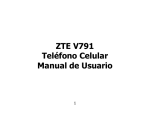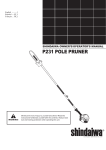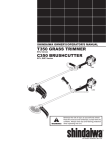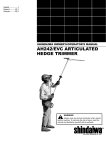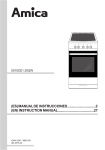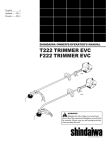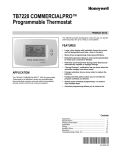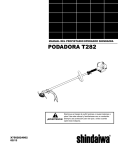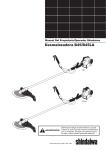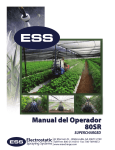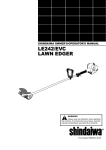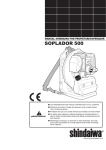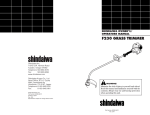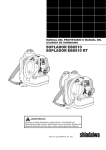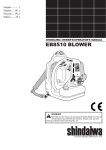Download M-230 - Edifik® Constructor Store
Transcript
SHINDAIWA OWNER’S/OPERATOR’S MANUAL M230 MULTIPURPOSE TOOL CARRIER M230 ■ Read this manual and familiarize yourself with its contents. ■ This machine is designed for cutting grass, weeds and brush. Use only for designated purpose. WARNING! ■ Minimize the risk of injury to yourself and others. ■ Always wear eye protection when operating this machine. ■ Do not operate or service this machine unless you clearly understand ■ this manual. Keep this manual available at all times so that you can reference it whenever you have a question about the use of this unit. Part Number 65028-94310 Rev. 8/07 Introduction Attention Statements The Shindaiwa 230 series hand-held power equipment has been designed and built to deliver superior performance and reliability without compromise to quality, comfort, safety or durability. Throughout this manual are special “attention statements”. Shindaiwa engines represent the leading edge of high-performance engine technology, delivering exceptionally high power with remarkably low displacement and weight. As an owner/operator, you’ll soon discover for yourself why Shindaiwa is simply in a class by itself! IMPORTANT! The information contained in this owner's/operator's manual describes M230 Multipurpose Tool Carrier available at the time of publication. Shindaiwa Inc. reserves the right to make changes to products without prior notice, and without obligation to make alterations to units previously manufactured. WARNING! A statement preceded by the triangular attention symbol and the word “WARNING” contains information that should be acted upon to prevent serious bodily injury. CAUTION! A statement preceded by the word “CAUTION” contains information that should be acted upon to prevent mechanical damage. IMPORTANT! A statement preceded by the word “IMPORTANT” is one that possesses special significance. NOTE: A statement preceded by the word “NOTE” contains information that is handy to know and may make your job easier. Read and follow this manual, make sure anyone using the trimmer does likewise. Failure to do so could result in serious personal injury or machine failure. Keep this manual for future reference. Always wear a hard hat to reduce the risk of head injuries during operation of this machine. In addition, always wear eye and hearing protection. Shindaiwa recommends wearing a face shield as additional face and eye protection. Wear heavy duty, non-slip gloves. Safety tip shoes or boots with non-slip sole should be worn. This product conducts electricity. Keep the product and/or operator a minimum distance of 15 feet (4.5 meters) away from electrical sources and power lines. Keep bystanders at least 50 feet (15 meters) away from the operating trimmer to reduce the risk of being struck by falling objects or thrown debris. The blades / cutting attachments are SHARP! Handle with care. Be aware of the danger of falling debris. Contents PAGE Introduction................................................ 2 Attention Statements................................. 2 Safety Instructions..................................... 3 Safety Labels............................................... 3 Product Description................................... 4 Specifications.............................................. 4 Assembly and Adjustments....................... 5 Adding/Removing a Tool Attachment..... 5 Mixing Fuel................................................ 6 Filling the Fuel Tank................................. 6 Starting the Engine . ................................. 7 Stopping the Engine.................................. 8 Adjusting Engine Idle................................ 8 Maintenance............................................... 9 Long Term Storage.................................. 11 Troubleshooting Guide........................... 12 IMPORTANT! The operational procedures described in this manual are intended to help you get the most from this unit as well as to protect you and others from harm. These procedures are guidelines for safe operation under most conditions, and are not intended to replace any safety rules and/or laws that may be in force in your area. If you have questions regarding your 230-series hand held power equipment, or if you do not understand something in this manual, your Shindaiwa dealer will be glad to assist you. You may also contact Shindaiwa, Inc. at the address printed on the back of this manual. Safety Instructions WARNING! Never operate power equipment of any kind if you are tired or if you are under the influence of alcohol, drugs, medication or any other substance that could affect your ability or judgement. Work Safely WARNING! Attachments for the Multipurpose Tool Carrier operate at very high speeds and can do serious damage or injury if they are misused or abused. Never allow a person without training or instruction to operate this unit! Never make unauthorized attachment installations. Do not use attachments not approved by Shindaiwa for use on this unit. Stay Alert You must be physically and mentally fit to operate this unit safely. WARNING! Use Good Judgement ALWAYS wear eye protection to shield against thrown objects. ALWAYS wear hearing protection devices when operating this unit. NEVER operate the engine when transporting the unit. Make sure cutter safety guards are in place when transporting this unit. NEVER operate the engine indoors! Make sure there is always good ventilation. Fumes from engine exhaust can cause serious injury or death. ALWAYS make sure there are no missing or loose fasteners and that the stop switch and throttle controls are working properly. ALWAYS use the proper cutting tool for the job. ALWAYS clear your work area of trash or hidden debris that could be thrown back at you or toward a bystander ALWAYS make sure the cutting attachment tool is properly installed and firmly tightened before operation. NEVER use a cracked or warped cutting attachment: replace it with a serviceable one and make sure it fits properly. ALWAYS stop the engine immediately if it suddenly begins to vibrate or shake. Inspect for broken, missing or improperly installed parts or attachments. ALWAYS keep the unit as clean as practical. Keep it free of loose vegetation, mud, etc. NEVER extend trimming line beyond the length specified for your unit. ALWAYS hold the unit firmly with both hands when cutting or trimming, and maintain control at all times. ALWAYS keep the handles clean. ALWAYS disconnect the spark plug wire before performing any maintenance work. BEFORE starting the engine make sure the cutting attachment is not contacting anything. ALWAYS stop the engine immediately and check for damage if you strike a foreign object or if the unit becomes tangled. Do not operate with broken or damaged equipment. Safety Labels M230 IMPORTANT! Safety and Operation Information Labels: Make sure all information labels are undamaged and readable. Immediately replace damaged or missing information labels. New labels are available from your local authorized Shindaiwa dealer. Figure 1 Product Description Using the accompanying illustrations as a guide, familiarize yourself with this unit and its various components. See Figure 2. Understanding your unit helps ensure top performance, long service life and safer operation. M230 WARNING! Air Cleaner Handle Outer Tube Coupler Throttle Trigger Before assembling, make sure you have all the components required for a complete unit: ■ Engine/Outer tube assembly ■ Handle ■ Kit containing handle mounting bracket and hardware, this owner/operator's manual and tool kit for routine maintenance. Tool kits vary by model and may include a hex wrench set, a spark plug/screwdriver combination wrench, and a spanner. Grip Ignition Switch Do not make unauthorized modifications or alterations to any of these units or their components. Prior to Assembly Spark Plug Throttle Lockout Lever Tank Guard Latch protector Fuel Tank Latch Coupler Screw Knob Figure 2a Figure 2 M23002a IMPORTANT! The terms “left”, “left-hand”, and “LH”; “right”, “right-hand”, and “RH”; “front” and “rear” refer to directions as viewed by the operator during normal operation. Specifications Engine Name . .................................................................................................................................................................................................M230 Engine model................................................................................................................................................................................................... S230 Engine type.................................................................................................................................................... 2-cycle, vertical cylinder, air cooled Dry weight (less attachments)...........................................................................................................................................................4.2 kg/9.4 lb Displacement . ............................................................................................................................................................................ 22.5 cc/1.4 cu. in. Bore x stroke................................................................................................................................................................ 32 x 28 mm/1.25 x 1.10 in. Engine Speed at Maximum Power Output . ............................................................................................................................. 7,500 rpm (min-1) Maximum power output................................................................................................................................................................... 0.8 kW/1.1 hp Engine speed at idling ................................................................................................................................................................ 2,750 rpm (min-1) Fuel tank capacity............................................................................................................................................................................554 cc/18.7 oz. Fuel/oil ratio........................................................................................................................................... 50:1 with Shindaiwa 2-cycle Mixing Oil Carburetor .......................................................................................................................................................................................... Walbro WYL Ignition .............................................................................................................................................. One piece electronic, transistor-controlled Spark plug........................................................................................................................................................................................... NGK BMR6A Air filter....................................................................................................................................................... Non-reversible flocked filter element Starting method............................................................................................................................................................................................. Recoil Stopping method ..................................................................................................................................................................................Slide switch Transmission type . ......................................................................................................................Automatic, centrifugal clutch with bevel gear Specifications subject to change without notice. Assembly and Adjustments Connect the Handle to the Outer Tube. 1. Position the handle on the outer tube as shown. See Figure 3. 2. Install the mounting bracket with the socket-head screws. Tighten the screws finger-tight ONLY at this time. Throttle Assembly Socket-head Capscrews 3. Locate the handle in the best position for operator comfort (usually about 10 inches ahead of the throttle assembly). Handle 4. Secure the handle by alternately tightening the four socket-head screws in a diagonal or “criss-cross” fashion. Outer Tube Mounting Bracket Figure 3 Installing a Tool Attachment 1. Place the unit and tool assembly on a clean, flat surface so that both assemblies fit end to end. Tube Assembly Latch Protector (extended) Latch The unit should be facing up and the tool assembly should be positioned with the locking hole in the tube end facing up. See Figure 4a. Locking Hole CAUTION! Keep the open ends of the tubes clean and free of impurities! Coupler Screw Knob 2. Slip off the protective covers from the ends of both tubes, and loosen the coupler screw knob. Coupler Figure 4a Coupler 3. Insert the tool assembly into the coupler, with the tool decal facing up, until the line of the decal is flush with the end of the coupler. Tool Assembly Latch Protector (lowered) 4. Twist the tool back and forth until you are sure it snaps in place by the coupler latch. See Figure 4a. 5. When the two tube halves are locked together, press down on the springloaded latch protector and tighten the coupler screw. See Figure 4b. Coupler Screw Knob Figure 4b Removing a Tool Attachment 1. With the unit on a clean, flat surface, loosen the coupler screw. The springloaded coupler protector should pop up. Press Latch 2. Press down on the latch with your finger or thumb. This releases the coupler lock. See Figure 5. 3. Pull the tool assembly out of the coupler. Figure 5 Mixing Fuel CAUTION! Some types of gasoline contain alcohol as an oxygenate. Oxygenated gasoline may cause increased operating temperatures. Under certain conditions, alcohol-based gasoline may also reduce the lubricating qualities of some 2-cycle mixing oils. Never use any type of gasoline containing more than 10% alcohol by volume! Generic oils and some outboard oils may not be intended for use in high-performance engines, and should never be used in your Shindaiwa engine. ■ Use only fresh, clean unleaded gasoline with a pump octane of 87 or higher. ■ Mix all fuel with a 2-cycle air-cooled mixing oil that meets or exceeds ISOL-EGD and/or JASO FC classified oils at 50:1 gasoline/oil ratio. CAUTION! This engine is designed to operate on a 50:1 mixture consisting of unleaded gasoline and ISO-L-EGD or JASO FC class 2-cycle mixing oil only. Use of non-approved mixing oils can lead to excessive carbon deposits. Examples of 50:1 mixing quantities Gasoline liters 2.5 5 10 20 - 1 1 1 1 2-cycle mixing oil milliliters 50 100 200 400 ml ml ml ml IMPORTANT! Mix only enough fuel for your immediate needs! If fuel must be stored longer than 30 days and oil with fuel stabilizer is not used, it should first be treated with a fuel stabilizer such as StaBil™. Oil is a registered JASO FC classified oil and also meets or exceeds ISO-L-EGD performance requirements. Shindaiwa One is recommended for use in all Shindaiwa low emissions engines. Shindaiwa One also includes a fuel stabilizer. Filling the Fuel Tank WARNING! Minimize the risk of fire! ■ STOP engine before refueling. ■ ALWAYS allow the engine to cool ■ ■ before refueling! Wipe all spilled fuel and move the engine at least 10 feet (3 meters) from the fueling point and source before restarting! NEVER start or operate this unit if there is a fuel leak. ■ NEVER start or operate this ■ ■ ■ unit if the carburetor, fuel lines, fuel tank and/or fuel tank cap are damaged. NEVER smoke or light any fires near the engine or fuel source! NEVER place any flammable material near the engine muffler! NEVER operate the engine without the muffler and spark arrester in good working condition. 1. Place the unit on a flat, level surface. 2. Clear any dirt or other debris from around the fuel filler cap. 3. Remove the fuel cap, and fill the tank with clean, fresh fuel. 4. Reinstall the fuel filler cap and tighten firmly. Starting the Engine IMPORTANT! Engine ignition is controlled by a two position switch mounted on the throttle housing labeled, “I” for ON or START and “O” for OFF or STOP. 3. Set the choke lever to the CLOSED position if engine is cold. 6. When the engine starts, slowly move the choke lever to the “OPEN” position. (If the engine stops after the initial start, close the choke and restart.) Open 1. Slide the ignition switch to the “I” position. Closed ON Figure 8 Figure 10 WARNING! Figure 6 2. Press the primer bulb until fuel can be seen flowing in the transparent return tube. 23121 The cutting attachment may start to rotate when the engine is started. Make sure the cutting attachment is free of obstructions before attempting to start the engine! 4. While holding the outer tube firmly with left hand, use your other hand to slowly pull the recoil starter handle until resistance is felt. Primer Bulb Make sure the cutting attachment is free of obstructions Return Tube Never start the engine from the operating position. IMPORTANT! If the engine fails to start after several attempts with the choke in the closed position, the engine may be flooded with fuel. If flooding is suspected, move the choke lever to the open position and repeatedly pull the recoil starter to remove excess fuel and start the engine. If the engine still fails to start, refer to the troubleshooting section of this manual. When the Engine Starts... ■ After the engine starts, allow the Figure 7 engine to warm up at idle 2 or 3 minutes before operating the unit. 23117 IMPORTANT! The primer system only pushes fuel through the carburetor. Repeatedly pressing the primer bulb will not flood the engine with fuel. WARNING! ■ After the engine is warm, pick 23120 Figure 9 Hold the outer tube firmly with left hand 5. When resistance is felt, pull quickly to start the engine. CAUTION! Do not pull the recoil starter to the end of the rope travel. Pulling the recoil starter to the end of the rope travel can damage the starter. up the unit and clip on the shoulder strap if so equipped. See the section on “Operating the Unit with a Shoulder Strap”. ■ Advancing the throttle makes the cut- ting attachment turn faster; releasing the throttle permits the attachment to stop turning. ■ If the cutting attachment continues to rotate when the engine returns to idle, carburetor idle speed should be adjusted. See the section “Adjusting Engine Idle”. Stopping the Engine Idle the engine briefly before stopping (about 2 minutes), then slide the ignition switch to the “O” (Engine OFF) position. OFF Figure 11 Adjusting Engine Idle Idle Speed Adjustment 1. Place the unit on the ground, then start the engine, and then allow it to idle 2-3 minutes until warm. 2. If the attachment rotates when the engine is at idle, reduce the idle speed by turning the idle adjustment screw counter-clockwise. See Figure 12. If a tachometer is available, the engine idle speed should be final adjusted to 2,750 (±250) min-1. Figure 12 The engine must return to idle speed whenever the throttle lever is released. Idle speed is adjustable, and must be set low enough to permit the engine clutch to disengage the cutting attachment. WARNING! The cutting attachment must NEVER rotate at engine idle! If the idle speed cannot be adjusted by the procedure described here, return the trimmer to your Shindaiwa dealer for inspection. IMPORTANT Carburetor fuel mixture adjustments are preset at factory and cannot be serviced in the field. General Maintenance Muffler This unit must never be operated with a faulty or missing spark arrester or mufler. Make sure the muffler is well secured and in good condition. A worn or damaged muffler is a fire hazard and may also cause hearing loss. Spark Plug WARNING! Before performing any maintenance, repair or cleaning work on the unit, make sure the engine and cutting attachment are completely stopped. Disconnect the spark plug wire before performing service or maintnenance work. WARNING! Non-standard parts may not operate properly with your unit and may cause damage and lead to personal injury. Keep the spark plug and wire connections tight and clean. Fasteners Make sure nuts, bolts, and screws (except carburetor adjusting screws) are tight. Daily Maintenance Prior to each work day, perform the following: ■ Remove dirt or debris from the engine, check the cooling fins and air cleaner for clogging and clean them as necessary. ■ Carefully remove any accumulation of dirt or debris from the muffler or the fuel tank. Dirt build-up in these areas could cause engine overheating, induce premature wear, or create a fire hazard. ■ Check for loose or missing screws or components. Make sure the cutting attachment is securely fastened. ■ Check the entire unit for leaking fuel or grease. 10-Hour Maintenance Every 10 hours of operation (more frequently in dusty or dirty conditions): Loosen Knob ■ Remove the air cleaner element. See Remove and clean or replace the element figure 14. Clean or replace as necessary. To clean element: Wash the air filter element thoroughly in soap and water. Let it dry before reinstalling the element. CAUTION! Never operate the unit if the air cleaner assembly is damaged or missing! Figure 13 10/15-Hour Maintenance Every 10 to 15 hours of operation: Clean the spark plug and check the gap at the electrode. ■ Remove and clean the spark plug. Adjust the spark plug electrode gap to 0.024 in./0.6 - 0.7 mm. If the spark plug must be replaced, use only an NGK BMR6A or equivalent resistor type spark plug of the correct heat range. See Figure 14. 0.024 in. (0.6 mm) CAUTION! Before removing the spark plug, clean the area around the plug to prevent dirt and debris from getting into the engine’s internal parts. M23016 Figure 14 NOTE: The NGK BMR6A also meets the requirements for electro magnetic compliance (EMC). 50-hour Maintenance Remove and replace the fuel filter element. ■ Use a hooked wire to extract the fuel filter from inside the fuel tank. See Figure 15. Before reinstalling the new filter element, inspect the condition of all the fuel system components (fuel pick-up line, fuel return line, tank vent line, tank vent, fuel cap and fuel tank). CAUTION! Make sure you do not pierce the fuel line with the end of the hooked wire. The line is delicate and can be damaged easily. 10 If damage, splitting or deterioration is noted, the unit should be removed from service until it can be inspected or repaired by a Shindaiwa-trained service technician. Hooked Wire Figure 15 Filter Element Muffler Maintenance Inspect and clean the spark arrestor screen. Engine Cover Knob WARNING! Engine Cover Never operate the unit with a damage or missing muffler or spark arrester! Operating with a missing or damaged spark arrester is a fire hazard and could also damage your hearing. 1. Remove the spark plug boot. 2. Remove the engine cover by loosening the engine cover knob ) and lifting the cover from the engine. 3. Remove the spark arrester screen screw. 4. Remove the spark arrester screen and clean with a stiff bristle brush. Muffler 5. Reassemble the spark arrester screen and engine cover in reverse order. Spark Arrestor Retaining Screw IMPORTANT! If you note excessive carbon buildup, consult with an authorized Shindaiwa servicing dealer. Spark Arrestor Screen Figure 16 Long Term Storage Whenever the unit will not be used for 30 days or longer, use the following procedures to prepare it for storage: ■ Clean external parts thoroughly and apply a light coating of oil to all metal surfaces. ■ Drain all the fuel from the fuel tank. IMPORTANT! All stored fuels should be stabilized with a fuel stabilizer such as STA-BIL™ , if oil with fuel stabilizer is not used. CAUTION! Gasoline stored in the carburetor for extended periods can cause hard starting and could also lead to increased service and maintenance cost. ■ Remove the remaining fuel from the fuel lines and carburetor: 1. Prime the primer bulb until no more fuel is passing through. 2. Start and run the engine until stops running. 3. Repeat steps 1 and 2 until the engine will no longer start. ■ Before storing the unit, repair or replace any worn or damaged parts. ■ Remove the air cleaner element from the carburetor and clean it thoroughly with soap and water. Let dry and reassemble the element. ■ Store the unit in a clean, dust-free area. 4. Remove the spark plug and pour about 1/4 ounce of 2-cycle mixing oil into the cylinder through the spark plug hole. Slowly pull the recoil starter 2 or 3 times so oil will evenly coat the interior of the engine. 5. Reinstall the spark plug. 11 Troubleshooting Guide What To Check Does the engine crank? Possible Cause NO NO YES Does the tank contain fresh fuel of the proper grade? Faulty recoil starter. Fluid in the crankcase. Consult with an authorized servicing dealer. NO Loose spark plug. Tighten and re-test. Excess wear on cylinder, piston, rings. Consult with an authorized servicing dealer. Fuel incorrect, stale, or contaminated; mixture incorrect. Refill with fresh, clean unleaded gasoline with a pump octane of 87 or higher mixed with 50:1 Shindaiwa Premium 2-cycle mixing oil or with an equivalent high quality 2-cycle mixing oil. Check for clogged fuel filter and/ or vent. Replace fuel filter or vent as required. Restart. The ignition switch is in “O” (OFF) position. Shorted ignition ground. Move switch to “I” (ON) position and restart. YES Is fuel visible and moving in the return line when priming? Remedy Internal damage. YES Good compression? ENGINE DOES NOT START NO YES Is there spark at the spark plug wire terminal? YES Check the spark plug. 12 NO Faulty ignition unit. Consult with an authorized servicing dealer. If the plug is wet, excess fuel may be in the cylinder. Crank the engine with the plug removed, reinstall the plug, and restart. The plug is fouled or improperly gapped. Clean and regap the plug to 0.024 in./ 0.6mm-0.7mm. Restart. The plug is damaged internally or of the wrong size. Replace the spark plug. Check the unit Specifications page for the proper spark plug for your unit. Restart. Troubleshooting Guide (continued) LOW POWER What To Check Is the engine overheating? Engine is rough at all speeds. May also have black smoke and/or unburned fuel at the exhaust. Possible Cause Remedy Operator is overworking the unit. Cut at slower rate. Carburetor mixture is too lean. Consult with an authorized servicing dealer. Improper fuel ratio. Refill with clean fresh unleaded gasoline with a pump octane of 87 or higher, mixed with Premium 2-cycle mixing oil at a 50:1 gasoline/oil ratio. Fan, fan cover, cylinder fins dirty or damaged Clean, repair or replace as necessary. Carbon deposits on the piston or in the muffler. Consult with an authorized servicing dealer Clogged air cleaner element. Clean or replace the air filter Loose or damaged spark plug. Tighten or replace the spark plug. Restart. Check the "Specifications" page in this manual for the correct spark plug for this unit. Air leakage or clogged fuel line. Repair or replace fuel filter and/or fuel line. Water in the fuel. Refill with fresh fuel/oil mixture. Piston seizure. Faulty carburetor and/or diaphragm Consult with an authorized servicing dealer. Overheating condition. Consult with an authorized servicing dealer. Improper fuel. Check fuel octane rating; check for presence of alcohol in the fuel. Refuel as necessary. Engine is knocking. Carbon deposits in the combustion chamber. Consult with an authorized servicing dealer. 13 Troubleshooting Guide (continued) ADDITIONAL PROBLEMS What To Check Poor acceleration. Engine stops abruptly. Engine difficult to shut off. Cutting attachment moves at engine idle. Excessive vibration. Attachment will not rotate. Possible Cause Clogged air filter. Clean or replace the air filter. Clogged fuel filter. Replace the fuel filter. Lean fuel/air mixture. Consult with an authorized servicing dealer. Idle speed set too low. Adjust: 2,750 (±250) min-1. Switch turned off. Reset the switch and re-start. Fuel tank empty. Refuel. See See "Filling the Fuel Tank" section of manual. Clogged fuel filter. Replace fuel filter. Water in the fuel. Drain; replace with clean fuel. See "Filling the Fuel Tank" section of manual. Shorted spark plug or loose terminal. Clean or replace spark plug. Check the "Specifications" page in this manual for the proper spark plug for your unit. Tighten the terminal. Ignition failure. Replace the ignition unit. Piston seizure. Consult with an authorized servicing dealer Ground (stop) wire is disconnected or switch is defective Test and replace as required. Overheating due to incorrect spark plug Replace the spark plug. Check the Specifications page in this manual for the proper spark plug for your unit. Overheated engine. Idle engine until cool. Engine idle too high. Set idle: 2,750 (±250) min-1. Broken clutch spring or worn clutch spring boss. Replace spring/shoes as required, check idle speed. Loose attachment holder. Inspect and re-tighten holders securely. Warped or damaged attachment. Inspect and replace attachment as required. Loose gearcase. Tighten gearcase securely. Bent main shaft/worn or damaged bushings. Inspect and replace as necessary. Shaft not installed in powerhead or gearcase. Inspect and reinstall as required. Broken shaft. Consult with a authorized servicing dealer. Damaged gearcase. 14 Remedy NOTES 15 NOTES Shindaiwa Inc. 11975 S.W. Herman Road Tualatin, Oregon 97062 Telephone: 503 692-3070 Fax: 503 692-6696 www.shindaiwa.com 16 Shindaiwa Corporation Head Office: 6-2-11, Ozuka-Nishi Asaminami-Ku, Hiroshima 731-3167, Japan Telephone: 81-82-849-2220 Fax: 81-82-849-2481 ©2007 Shindaiwa, Inc. Part Number 65028-94310 Revision 7/07 Shindaiwa is a registered trademark of Shindaiwa, Inc. Specifications subject to change without notice. Manual Del Propietario / Operador Shindaiwa M230 Porta Herramienta Multiple M230 ¡ADVERTENCIA! ■ Reduzca al mínimo el riesgo de lesiones, tanto a usted mismo como a otras personas. ■ Lea detenidamente este manual y familiarícese con su contenido. ■ Protéjase los ojos y los oídos siempre que trabaje con esta unidad. ■ Esta máquina está diseñada para cortar setos. ■ No utilice esta máquina ni efectúe trabajos de mantenimiento en ella sin haber ■ comprendido claramente todas las explicaciones de este manual. Mantenga el manual a su alcance en todo momento, de modo que pueda consultarlo si le surge alguna duda sobre el manejo de la máquina. Part Number 65028-94310 Rev. 2/07 Introducción Declaraciones De Seguridad La Serie 230 de maquinaria manual Shindaiwa, ha sido disenada y construida para suministrar un rendimiento superior sin comprometer calidad, comodidad ni durabilidad. Los motores Shindaiwa representan la technologia lider de motores de alto rendimiento, con excepcional alta potencia de peso y cilindrada sumamente bajos. Como proprietario/operario, usted no tardara en comprobar que Shindaiwa es la unica maquina en esta clase! A travéz de este manual se encuentran “declaraciones de seguridad” especiales.. ¡IMPORTANTE! La información contenida en este manual del proprietario/operario describe la Porta Herramienta Multiple M230 disponibles a la fecha de su publicación. Shindaiwa Inc. se reserva el derecho de realizar cambios a sus productos sin previo aviso, y sin la obligación de hacer modificaciones a máquinas fabricadas previamente. ¡ADVERTENCIA! Toda información precedida por un símbolo triangular de advertencia y la palabra ADVERTENCIA! contiene información o procedimientos que se deben cumplir para evitar lesiones. ¡PRECAUCIÓN! Toda información precedida por la palabra PRECAUCION! contiene información que se debe cumplir para evitar daños mecánicos. Lea y siga el manual, asegurese de que quien use esta podadora también lo lea. En caso de no leerlo y usar la podadora apropiadamente puede causarle serias lesiones tanto a usted como a la maquina. Guarde el manual para futuras consultas. Siempre utilice un casco para reducir el riesgo de lesiones en la cabeza al momento de utilizar la maquina. También utilice siempre lentes de protección así como protector para los oídos. Shindaiwa recomienda que utilicen un protector para la cara como medida de protección adicional. Utilice guantes para trabajo que sean antiresbalantes. ¡IMPORTANTE! Toda información precedida por la palabra “IMPORTANTE” contiene información especial y significante. NOTA: Toda información precedida por la palabra “NOTA” contiene información útil que puede hacer su trabajo más fácil. Botas de seguridad o botas de trabajo antirederrapantes también deben de se usadas. Estos productos atraen electricidad. Debe mantenerse la maquina así como el operador a una distancia de 4,5 metros de distancia de toda fuente de electricidad. La gente debe de permanecer a 15 metros de la maquina cuando esta en operación, esto para reducir el riesgo de ser golpeado por objetos que están siendo cortados. Las cuchillas o utensilios para cortar son muy “FILOSOS” Manéjelos con cuidado. Índice PAGE Declaraciones De Seguridad ................... 2 Instrucciones Generales de Seguridad.... 3 Etiquetas de Seguridad.............................. 3 Descripción del Producto.......................... 4 Especificaciones......................................... 4 Ensamblaje y Ajustes................................. 5 Mezcla de Combustible............................. 6 Llenando el Tanque de Combustible....... 6 Arranque del motor................................... 7 Parada del motor........................................ 8 Ajuste de Marcha Mínima del Motor....... 8 Mantenimiento .......................................... 9 Almacenamiento de Largo Plazo............ 11 Guia Diagnostico...................................... 12 ¡IMPORTANTE! El propósito de los procedimientos operacionales descritos en este manual es ayudarle a obtener el más alto rendimiento de su máquina y proteger a usted y a otras personas de sufrir lesiones. Estos procedimientos son pautas operativas para una operación segura bajo la mayoría de condiciones y no tienen el propósito de substituir las normas y/o leyes vigentes en su área. Si tiene alguna pregunta relacionada con su Serie 2510 o si no entiende alguna información contenida en este manual, consulte a su distribuidor Shindaiwa, quien le atenderá con gusto. También puede comunicarse con Shindaiwa Inc. a la dirección que aparece en la contra portada de este manual. Tenga cuidado con el escombro que cae de los árboles o de la maleza. Instrucciones Generales de Seguridad ¡ADVERTENCIA! Nunca opere ninguna máquinaria motorizada si está cansado o si está bajo la influencia de alcohol, drogas o medicamentos o cualquier otra substancia que pueda afectar su abilidad y juicio. Trabaje con cuidado Los accesorios para la porta herramienta multiple operan a velocidades altas y pueden causar daños o lesiones serias si son malusadas o abusadas. Nunca permita que una persona sin entrenamiento o instrucción opere esta unidad ! ¡ADVERTENCIA! Nunca instale accesorios no autorizados. No use accesorios no aprobados por Shindaiwa en esta unidad. Mantengase Alerta Debe de estar físicamente y mentalmente en forma para operar esta máquina con seguridad. ADVERTENCIA! Use Buen Juicio SIEMPRE use protección para los ojos como escudo contra objetos lanzados. SIEMPRE use proteccion auditiva cuando opere esta unidad. NUNCA opere el motor cuando transporte la unidad. Cerciorese de que los protectores de corte esten en su lugar cuando transporte la unidad. NUNCA opere la unidad en el interior! Cerciorese que siempre haya buena ventilación. El humo o gases del escape del motor pueden causar serias lesiones o la muerte. Siempre verifica que no haya sujetadores que falta o flojos y que el interruptor y acelerador están funcionando correctamente. SIEMPRE use el accesorio de corte apropiado. SIEMPRE mantenga su area de trabajo libre de basura u objetos que pueden rebotar contra usted o contra transeúntes. SIEMPRE cerciore que el accesorio de corte este propiamente instalado y firmemente apretado antes de empezar a operar. NUNCA use un accesorio de corte quebrado o doblado. Reemplacelo por uno util y cerciore de que este propriamente situado. SIEMPRE pare el motor inmediatamente y revise en busca de daños si golpea un objeto extraño o si la unidad se enreda. No opere con equipo dañado o quebrado. SIEMPRE mantenga la máquina lo más limpia posible. Mantengala libre de vegetación, barro, etc. NUNCA extienda el cable de nylon más allá de lo especificado para su máquina. SIEMPRE sujete la máquina firmemente con ambas manos cuando corte o recorte, y mantenga el control en todo momento. SIEMPRE mantenga los mangos limpios. SIEMPRE desconente el cable de bujía antes de hacer mantenimiento a la máquina. ANTES de encender el motor, cerciore de que el accesorio de corte no este en contacto con algo. SIEMPRE detenga el motor inmediatament y revise en busca de danos, si golpea un objeto extrano o si la unidad se enreda. NO opere con equipo quebrado o danado. Etiquetas de Seguridad M230 ¡IMPORTANTE! Etiquetas de Seguridad y de Información de Operación: Asegurese que toda las etiquetas estén libres de daños y legibles. Reemplace inmediatamente etiquetas dañadas o faltantes. Etiquetas nuevas están disponibles en su centro de servicio local autorizado de Shindaiwa. Figura 1 Descripción del Producto Use las ilustraciones como guía, familiarícese con esta unidad y sus varios componentes. Consulte la figura 2. Conociendo la unidad le ayudará a obtener alto rendimiento, vida útil más prolongada y operación con seguridad M230 Bujía Seguro del acelerador Interruptor de encendido ¡ADVERTENCIA! No haga modificaciones o alteraciones no autorizadas a ninguna de éstas máquinas ni a sus componentes. Agarrador Mango Filtro de aire Tubo exterior Gatillo del acelerador Antes de Ensamblar Antes de ensamblar, cerciórese de que tenga todos los componentes necesarios para armar una máquina completa. ■ Ensamblaje del motor y tubo exterior. ■ Mango ■ Caja conteniendo la abrazadera y piezas para montar el mango, este manual del propietario/operador y juego de herramientas para mantenimiento rutinario. Las cajas de herramientas varian por modelo y pueden incluir una llave hexagonal, llave bujía y destonillador, y una llave inglesa. Tanque protector Protector de seguro Tanque de combustible Seguro Perilla de tornillo del acoplador Acoplador Figura 2a Figura 2 M23002a ¡IMPORTANTE! Los términos “izquierda”, “mano izquierda”, y “LH”; “derecha”, “mano derecha”, y “RH”, “delantera” y “trasera”, indican direcciones desde el punto de vista del operador durante la operación normal de este producto. Especificaciones Nombre del modelo.........................................................................................................................................................................................M230 Modello de motor............................................................................................................................................................................................. S230 Tipo de motor........................................................................................................................... 2 tiempos, cilindro vertical, refrigerado por aire Peso seco (sin accesorios para cortar)..............................................................................................................................................4,2 kg/9,4 lb Cilindrada .................................................................................................................................................................................... 22,5 cc/1,4 cu. in Diámetro x Carrera...................................................................................................................................................... 32 x 28 mm/1,25 x 1,10 in. Régimen de giro a la potencia máxima . ...................................................................................................................................7.500 rpm(min-1) Potencia Máxima............................................................................................................................................................................... 0.8 kW/1,1 hp Régimen de giro al ralentí .........................................................................................................................................................2.750 rpm (min-1) Capacidad del Tanque de Combustible.........................................................................................................................................554 cc/18,7 oz. Proporción combustible/aceite........................................................................................................................................................................ 50:1 Tipo de Carburador ........................................................................................................................................................................... Walbro WYL Sistema de Encendido ............................................................................................................................. Electrónico, controlado por transistor Bujía..................................................................................................................................................................................................... NGK BMR6A Filtro de Aire........................................................................................................................................................... Filtro de fieltro no reversible Metodo de Arranque.................................................................................................................................................... Arrancador autorretráctil Metodo de Parada ...................................................................................................................................................................... Arrancador suave Tipo de Transmisión........................................................................................Automática, embrague centrífugo con engranajes helicoidales Especificaciones conforme a cambio sin el aviso Ensamblaje y Ajustes Conecte el mango al tubo exterior 1. Posicione el mango sobre el tubo exterior como se demuestra. Consulte la figura 3. Ensamblaje del acelerador Tornillos de cabeza hueca 2. Instale la abrazadera de montaje con los tornillos de cabeza hexagonal. En este momento, apriete los tornillos con los dedos solamente. Mango 3. Ubique el mango en la mejor posicion comoda para el operario (usualmente 10 pulgadas aproximadamente hacia delante del ensamblaje del acelerador). Tubo Exterior 4. Asegure el mango ajustando alternadamente los cuatro tornillos de cabeza hueca en forma diagonal o cruzada. Abrazadera de montaje Instalacion de una herramienta accesorio 1. Posicione la unidad y el ensamblaje de herramienta sobre una superficie limpia y plana, de tal forma que ambos ensamblajes encajen. Ensamblaje de tubo Protector del seguro (extendido) Seguro El ensamblaje de la unidad debe estar cara arriba y el ensamblaje de la herramienta debe estar posicionado con el hoyo del seguro en el tubo con cara arriba. Consulte la figura 4a. Hoyo de seguro 2. Retire las cubiertas protectoras de a bos tubos y afloje la perilla del tornillo del acoplador. ¡PRECAUCIÓN! Pernillo de tomillo del acoplador Figura 4a Acoplador Mantenga los hoyos de los tubos limpios y libre de impurezas! Protector del seguro (rebajado) 3. Inserte el ensamblaje del herramienta en el acoplador, con la calcomania de la herramienta cara arriba, hasta que la linea de la calcomania este junto al final del acoplador. 4. Mueva la herramienta de lado a lado hasta que este seguro de que encaje en lugar a travez del seguro del acoplador. Consulte la figura 4a Ensamblaje de herramienta Acoplador Perilla de tornillo del acoplador Figura 4b 5. Cuando ambos tubos esten intercalados, presione hacia abajo el protector de seguro con resorte y apriete el tornillo del acoplador. Consulte la figura 8. Retirando una herramienta accesorio 1. Con la unidad sobre una superficie limpia y plana, afloje el tornillo del acoplador. El protector de seguro con resorte debe salir. Presione el seguro 2. Presione el seguro hacia abajo con su dedo. Esto libera el seguro del acoplador. Consulte la figura 5. 3. Jale el ensamblaje de la herramienta fuera del acoplador. Figura 5 Mezcla de Combustible ¡PRECAUCIÓN! ¡PRECAUCIÓN! Algunas gasolinas contienen alcohol como un oxigenante. Combustibles oxigenados pueden aumentar la temperatura del motor durante su funcionamiento. Bajo ciertas condiciones, combustible con alcohol puede reducir la calidad lubricante de algunos aceites de mezcla. Nunca use ningún combustible que contenga más de 10% de alcohol por volumén! Aceites genéricos y algunos aceitespara motores fuera de borda puedaque no sean para el uso en motoresde 2 tiempos, de alto rendimiento, y no deben ser usados en su motor Shindaiwa! Este motor ha sido diseñado para funcionar únicamente con una mezcla de 50:1 de gasolina sin plomo y aceite de mezcla Premium para motores de dos tiempos. La utilización de aceites de mezcla no autorizados puede incrementar los costes de mantenimiento y los daños en el motor. ■ Use solamente gasolina fresca, limpia y sin plomo, con índice de octanaje de 87 o superior. ■ Mezcle todo el combustible con aceite de mezclar para motores de 2 tiempos enfriados por aire que cumpla o exceda aceites clasificados ISO-L-EDG y/o JASO FC a proporción de 50:1 gasolina/aceite. Ejemplos de cantidades de mezcla a proporción de 50:1 Gasolina liters 2,5 5 10 20 - 1 1 1 1 Mezclar para motores de 2 tiempos milliliters 50 100 200 400 ml ml ml ml ¡IMPORTANTE! Mezcle solamente el combustible necesario para uso inmediato! De ser necesario almacenar el combustible por más de 30 días, y si no se está usando aceite con estabilizador de combustible, entonces el combustible debe ser tratado primero con un estabilizador como por ejemplo STA-BIL™. El aceite es un aceite registrado de JASO FC clasificado y tambien cumple o excede los requisitos de rendimiento de ISO-L-EGD. Shindaiwa One es recomendado para el uso en todo los motores Shindaiwa de baja emisión. Shindaiwa One tambien incluye el estabilizador de combustible. Llenando el Tanque de Combustible ¡ADVERTENCIA! Disminuya el riesgo de incendios! ■ Nunca encienda u opere esta ■ Pare el motor antes de volver a ■ ■ ■ llenar el tanque. Siempre deje enfriar el motor antes de volver a llenar el tanque! Limpie todo derrame de combustible y aleje el motor por lo menos 10 pies (3 metros) del depósito de combustible antes de volver a prender el motor! Nunca comienze u opere esta máquina si existe una périda de combustible. ■ ■ ■ máquina si el carburador, líneas de combustible y/o tapa de tanque o tanque de combustible se encuentran dañados. Nunca fume o encienda fuegos cerca del motor o del combustible! Nunca coloque material inflamable cerca del silenciador del motor! Nunca opere el motor sin antes comprobar que el silenciador y el guardachispas estén funcionando adecuadamente. 1. Posicione la maquina sobre una superficie plana y nivelada. 2. Retire cualquier suciedad o despojos alrededor de la tapa de combustible. 3. Retire la tapa de combustible y llene el tanque con combustible fresco y limpio. 4. Reinstale la tapa de combustible y apriete firmemente. Arranque del motor ¡IMPORTANTE! El encendido del motor está controlado por un interruptor de dos posiciones montado en el mango del acelerador indicado “I” (encendido o arranque) y “O” (apagado o pare). 1. Deslice el interruptor hacia la posición “I” (motor encendido). 3. Posicione la palanca del cebador en la posición CLOSED (cerrado) si el motor está frío. 6. Cuando arranque el motor, mueva despacio la palanca del cebador a la posición “OPEN” (abierto). Consulte la figura 18. (Si el motor para después del arranque inicial, cierre la palanca del cebador y vuelva arrancar). Cerrado Abierto Encendido Figura 8 ¡ADVERTENCIA! El accesorio de corte se moverá cuando arranque el motor. Manténgase alejado del accesorio de corte al arrancar el motor. Figura 6 2. Presione la bombilla de cebado hasta que vea pasar combustible por el tubo de retorno transparente. 4. Mientras sostiene el tubo exterior firmemente con una mano, jale despacio la cuerda del arrancador recular hasta que sienta resistencia. Cerciórese de que el accesorio de corte esté libre de obstrucciones! Bombilla de cebado 23121 ¡ADVERTENCIA! Nunca arranque el motor desde la posición de operación. ¡IMPORTANTE! Si el motor falla en arrancar después de varios intentos con la palanca del cebador en posicion cerrada, puede que el motor esté ahogado con combustible. Si esto se sospecha, mueva la palanca del cebador a la posición abierta y repetidamente jale el arrancador recular para remover el exceso de combustible y para arrancar el motor. Si aún falla en arrancar el motor, consulte el guía diagnóstico de este manual. Cuando arranca el motor… Tubo de Retorno Figura 7 ¡IMPORTANTE! 23117 La bomba de cebado solamente empuja combustible a travéz del carburador. Presionando repetidamente la bomba de cebado no ahogará el motor con combustible. Figura 10 23120 Figura 9 Al encender el motor, mientras sostiene el tubo exterior firmemente con una mano 5. Cuando sientas la resistencia, luego jale rápidamente para arrancar el motor. CAUTION! No jale el arrancador recular hasta el final de la cuerda. De lo contrario, puede dañar el arrancador. ■ Después de que arranque el motor, permita que caliente en marcha mínima por 2 ó 3 minutos antes de usar la máquina. ■ Después de que caliente el motor, levante la máquina y asegure el arnés si así está equipada. Consulte la página 11. ■ Adelantando el acelerador hace que el accesorio de corte gire más rápido; liberando el acelerador permite que el accesorio pare de girar. ■ Si el accesorio de corte continua girando cuando el motor regresa a marcha mínima, la velocidad mínima del carburador debe ser ajustada. (Consulte “Ajuste de Marcha Mínima” a continuación). Parada del motor APAGADO Ponga el motor en marcha mínima por dos o tres minutos antes de apagarlo, luego deslice el interruptor de ignición a la posición “O” (motor apagado). Figura 11 Ajuste de Marcha Mínima del Motor Ajuste de marcha mínima 1. Coloque el aparato en el suelo, luego encienda el motor y déjelo funcionar en marcha mínima durante 2 ó 3 minutos hasta que caliente. 2. Si el accesorio de corte gira mientras el motor está en marcha mínima, reduzca la marcha minima, girando el tornillo de ajuste de marcha mínima en el sentido contrario a las agujas del reloj. Consulte la figura 12. Figura 12 El motor debe retornar a marcha mínima cuando la palanca del acelerador es liberada. La marcha mínima es ajustable y debe ser suficientemente mínima para permitir que el embrague del motor libere el accesorio de corte. Si tiene un tacómetro disponible, la marcha mínima se debe ajustar a 2750 (±250) min-1. ¡ADVERTENCIA! El accesorio de corte NUNCA debe girar en velocidades mínimas! Si la marcha mínima no puede ser ajustada por el procedimiento descrito aquí, entronces devuelva la podadora a su distribuidor Shindaiwa para inspección. ¡IMPORTANTE! Los ajustes de mezcla de carburador son prefijados en la fábrica y no pueden ser cambiados en el campo. Mantenimiento General Silenciador Esta máquina nunca debe ser operada con un guardachispas o silenciador defectuoso o faltante. Cerciórese de que el silenciador esté bien asegurado y en buena condición. Un silenciador usado o dañado es un riesgo de incendio y puede causar la perdida de audición. ¡ADVERTENCIA! Antes de efectuar mantenimiento, reparación o limpieza de la máquina, cerciórese de que el motor y el accesorio de corte estén completamente detenidos. Desconecte el cable de bujía antes de efectuar servicio de mantenimiento. ¡ADVERTENCIA! Los repuestos no estándar puedan que no operen propiamente con su máquina y pueden causar daño y conducir a una lesión personal. Bujía Mantenga la bujía y las conexiones de cable apretadas y limpias. Sujetadores Cerciórese de que las tuercas, pernos y tornillos (a excepción de los tornillos de ajuste del carburador) estén apretados. Mantenimiento Diario Antes de cada día de trabajo, efectúe lo siguiente: ■ Retire toda suciedad y despojo del motor, revise las aletas de enfríamiento y el filtro de aire y límpielos de ser necesario. ■ Cuidadosamente, retire cualquier acumulación de suciedad o despojo del silenciador y del tanque de combustible. La acumulación de suciedad en dichas áreas puede ocasionar el sobrecalentamiento del motor, inducir el gasto prematuro o crear un riesgo de incendio. ■ Revise que no falten tornillos y que no estén flojos. Cerciórese de que el accesorio de corte esté firmemente asegurado. ■ Revise la máquina entera en busca de goteo de combustible o grasa. Cada 10 horas mantenimiento Cada 10 horas de operación (más frecuentemente bajo condiciones sucias o polvorientas): Aflojando el tornillo Limpie o reemplace el elemento del filtro de aire como sea necesario ■ Retire el elemento del filtro de aire. Consulte la figura 13. Limpie o reemplace como sea necesario. Para lavar el elemento: Lavelo meticulosamente con agua y jabón. Deje que seque antes de reinstalarlo. ¡PRECAUCIÓN! No opere esta máquina si el filtro de aire está sucio, dañado o si está húmedo. Figura 13 Cada 10 - 15 horas mantenimiento ■ Retire y limpie la bujía. Ajuste la distan- Limpie la bujía y revise la distancia del electrodo. cia del electrodo a 0.6 -0.7 mm./0.024 in. Si la bujía necesita ser reemplazada, use solamente una bujía BPMR6A o una bujía equivalente con resistencia al calor correcta. Consulte la figura 14. (0.6 mm) 0.024 in. ¡PRECAUCIÓN! Antes de retirar la bujía, limpie alrededor de la misma para evitar que entre polvo o suciedad a las partes internas del motor. M23016 Figura 14 NOTA : La BPMR6A tambíen cumple con los requisitos de la regulación de electro mangnéticos (EMC). Cada 50 horas mantenimiento Retire y reemplace el elemento del filtro. ■ Use un gancho de alambre para extraer el filtro de combustible del tanque de combustible. Antes de reinstalar el filtro, inspeccione la condición de todo los componentes del sistema de combustible (manguera de alimentacion, manguera del ventilador, ventilador, tapa y tanque). ¡PRECAUCIÓN! Asegure de no perforar la tuberia de combustible con la punta del gancho de alambre, pués esta línea es delicada y se puede dañar fácilmente. 10 Si descubre daños, quebraduras o deteriorización, retire la unidad de operación hasta que pueda ser inspeccionada o reparada por un técnico de servicio entrenado por Shindaiwa. Gancho de alambre Figura 15 Filtro de combustible Mantenimiento del silenciador Cada 135 horas de operación, retire y limpie el silenciador. Perilla de la tapa del motor ¡ADVERTENCIA! Tapa del motor Nunca opere la máquina con un silenciador o guardachispas dañado o faltante! De lo contrario, puede ser un riesgo de incendio y podría también causar daños a sus oidos. 1. Retire el capuchón de bujía. 2. Aflojando la perilla de la tapa del motor (la pernilla se captura) y retire la tapa del motor. Consulte la figura 15. 3. Retire el tornillo de la maya del guardachispas. Silenciador 4. Retire la maya del guardachispas y limpie con un cepillo de cerdas gruesas. 5. Vuelva a ensamblar el guardachispas y la tapa del motor en forma reversa al order de desemblaje. Tornillos del silenciador ¡IMPORTANTE! Si nota acumulación excesiva de carbón, consulte con su centro de servicio o distribuidor autorizado Shindaiwa. Guardachispas Figura 16 Almacenamiento de Largo Plazo Cada vez que la máquina no va a ser usada por 30 días o más, siga los siguientes procedimientos para preparar su almacenamiento: ■ Limpie las partes externas y aplique una capa ligera de aceite a todas las superficies metálicas. ■ Drene todo combustible en el tanque. ¡IMPORTANTE! Todo combustible almacenado debe estar estabilizado con un estabilizador de combustible tal como STA-BIL™, l menos que use aceite con estabilizador de combustible. ■ Retire el resto del combustible en las ■ Antes de almacenar la máquina, repare 1. Empuje la bombilla de cebado hasta que el combustible deje de pasar. ■ Retire el elemento del filtro de aire y tuberias de combustible y carburador: 2. Arranque y mantenga prendido el motor hasta que pare de funcionar. 3. Repita los pasos 1 y 2 hasta que el motor ya no arranque. 4. Retire la bujía y vierta aproximadamente 7 ml./.25 de onza de aceite de mezcla para motores de 2 tiempos en el cilindro a través del agujero de la bujía. Lentamente jale el arrancador 2 ó 3 veces para que el aceite se aplique uniformemente en el interior del motor. o cambie cualquier pieza dañada o gastada. limpielo minuciosamente con agua y jabón. Deje que seque y vuelva a ensamblar el elemento. ■ Almacene la máquina en un sitio limpio y libre de polvo. 5. Reínstale la bujía. ¡PRECAUCIÓN! Gasolina almacenada en el carburador por periódos largos puede causar un arranque duro y puede conducir a un aumento en costo de servicio y mantenimiento. 11 Guia Diagnostico El Motor No Arranca Qué revisar ¿Arranca el motor? Posible causa NO NO SÍ ¿Contiene el tanque combustible fresco y con el octanaje correcto? Líquido en el cárter. Consulte a un agente de servicio de Shindaiwa. Daños internos. SÍ ¿Hay buena compresión? Arrancador autorretráctil defectuoso. Remedio NO Bujía suelta. Apriete y pruebe otra vez. Consulte con un agente de servicio autorizado. Desgaste excesivo en el cilindro, el pistón o los anillos. Consulte a un agente de servicio de Shindaiwa. Combustible incorrecto, viejo o contaminado; mezcla incorrecta. Rellene con gasolina sin plomo, reciente y limpia con un octanaje de 87 o superior, mezclada con aceite Premium de Shindaiwa para motores de dos tiempos en una proporción gasolina/aceite de 50:1. SÍ ¿Puede verse combustible moviéndose en la línea de retorno al cebar? NO SÍ NO ¿Hay chispas en el terminal del cable de la bujía? Revise el filtro de combustible y el ventilador en busca de obstrucciones. Reemplace el filtro de combustible o la válvula de presión según sea necesario. Vuelva a arrancar. El interruptor de encendido está en posición de apagado “O”. Lleve el interruptor a la posición de encendido “I” y reinicie. Conexión a tierra defectuosa. Unidad de encendido defectuosa. Consulte a un agente de servicio de Shindaiwa. Si la bujía está húmeda, puede habe exceso de combustible en el cilindro. Retire la bujía y arranque el motor, vuelva a colocar la bujía y arranque de nuevo. La bujía está obstruida o tiene una separación de electrodos incorrecta. Limpie y vuelva a calibrar la bujía a 0,6 ~ 0,7 mm./0.024 in. Vuelva a arrancar. La bujía puede tener daños internos o es del tamaño equivocado. Reemplace la bujía. Consulte la sección "Especificaciones" para la bujía correcta. Vuelva a arrancar. SÍ Compruebe la bujía. 12 Guia Diagnostico (continuación) Qué revisar ¿Se sobrecalienta el motor? El motor funciona bruscamente a cualquier velocidad. También puede que salga humo negro o combustible no quemado por el escape. BAJA POTENCIA Posible causa Remedio Unidad sobrecargada por el usuario. Corte más despacio. La mezcla del carburador es muy pobre. Consulte con un agente de servicio autorizado. Proporción de combustible inapropiada. Rellene con gasolina sin plomo, reciente y limpia con un octanaje de 87 o superior, mezclada con aceite Premium de Shindaiwa para motores de dos tiempos en una proporción gasolina/aceite de 50:1. Ventilador, tapa del ventilador o aletas del cilindro sucios o dañados. Limpiar, reparar o sustituir en caso necesario. Depósitos de carbonilla en el pistón o el silenciador. Consulte con un agente de servicio autorizado. Filtro de aire obstruido. Limpie o reemplace el filtro de aire. Bujía suelta o dañada. Apriete o cambie la bujía. Consulte la sección "Especificaciones" para la bujía correcta. Vuelva a arrancar. Fuga de aire o conducto de combustible obstruido. Repare o cambie el filtro o el conducto de combustible. Agua en el combustible. Vuelva a llenar de mezcla reciente de combustible y aceite. Pistón gripado. Consulte con un agente de servicio autorizado Carburador y/o diafragma defectuoso. Sobrecalentamiento. Consulte con un agente de servicio autorizado Combustible inadecuado. Revise el índice de octanaje del combustible; revise si el combustible contiene alcohol. Reposte cuando sea necesario. El motor golpea. Depósitos de carbonilla en la cámara de combustión. Consulte con un agente de servicio autorizado. 13 Guia Diagnostico (continuación) Otros problemas Qué revisar Deficiente aceleración. El motor se detiene abruptamente. Difícil apagado del motor. El accesorio de corte se mueve al ralentí del motor. Excesiva vibración. El accesorio no gira. Posible causa Filtro de aire obstruido. Limpie o reemplace el filtro de aire. Filtro de combustible obstruido. Cambie el filtro de combustible. Mezcla de combustible/aire muy pobre. Consulte con un agente de servicio autorizado. Ralentí ajustado muy bajo. Ajuste: 2.750 (±250) min-1. Interruptor en posición de apagado. Restablezca el interruptor y vuelva a arrancar. Tanque de combustible vacío. Reposte combustible. Consulte la sección "Llenando el Tanque de Combustible". Filtro de combustible obstruido. Cambie el filtro de combustible. Agua en el combustible. Drene; cambie con combustible limpio. Consulte la sección "Llenando el Tanque de Combustible".. Bujía defectuosa o terminal flojo. Limpie o reemplace la bujía. Consulte la sección "Especificaciones" para la bujía correcta. Apriete el terminal. . Fallo en el sistema de encendido. Reemplace el sistema de encendido. Pistón gripado Consulte con un agente de servicio autorizado. Cable de conexión a tierra (detenido) desconectado o llave defectuosa. Pruebe y reemplace según sea necesario. Sobrecalentamiento debido a bujía incorrecta. Reemplace la bujía con una NGK BMR6A. Motor sobrecalentado. Deje el motor al ralentí hasta que se enfríe. Ralentí demasiado alto. Fije el ralentí: 2.750 (±250) min-1. Resorte del embrague roto o resalte desgastado. Reemplace muelle/zapatas según sea necesario; compruebe el ralentí. Soporte del accesorio suelto. IInspeccione y vuelva a apretar los soportes con firmeza. Accesorio torcido o dañado. Examine y cambie el accesorio según sea necesario. Caja de engranajes suelta. Apriete la caja de engranajes con firmeza. Eje central doblado, cojinetes desgastados o dañados. Examine y cambie según sea necesario. Eje no instalado en el bloque motor o la caja de engranajes. Examine y vuelva a instalar según sea necesario. Eje roto. Consulte con un agente de servicio autorizado. Caja de engranajes dañada. 14 Remedio NOTES 15 NOTES Shindaiwa Inc. 11975 S.W. Herman Road Tualatin, Oregon 97062 Telephone: 503 692-3070 Fax: 503 692-6696 www.shindaiwa.com 16 Shindaiwa Corporation Head Office: 6-2-11, Ozuka-Nishi Asaminami-Ku, Hiroshima 731-3167, Japan Telephone: 81-82-849-2220 Fax: 81-82-849-2481 ©2007 Shindaiwa, Inc. Part Number 65028-94310 Revision 7/07 Shindaiwa is a registered trademark of Shindaiwa, Inc. Specifications subject to change without notice.

































